So far, we've devoured delightful geology at
Astoria,
Ecola State Park, Hug Point
north and
south, the
world's shortest river, and the
Three Capes Scenic Loop. Truly a six-course meal! Now, 'tis time for dessert. Herein, we see the light and discover that water is a right bastard.
We've arrived, my darlings, at Cape Meares, and it's only fitting that we look back upon where we've been.
 |
| Looking Back |
Click to embiggen, and savor the view a moment before we dig in. The closest bit is Maxwell Point, and in the far distance, you can see the long, jutting finger of Cape Lookout. Cape Kiwanda is tucked in between the two, out of sight but certainly not out of mind.
You are standing on yet more Columbia River Basalt. Do try to contain your surprise.
Right, then. Let's have a look around. "Why do we have to look at
more basalt, Dana?" you may wail, and I shall answer you: Not only are the views outstanding, but there's a bloody fantastic lighthouse here, one that stares you in the face as you walk down the path:
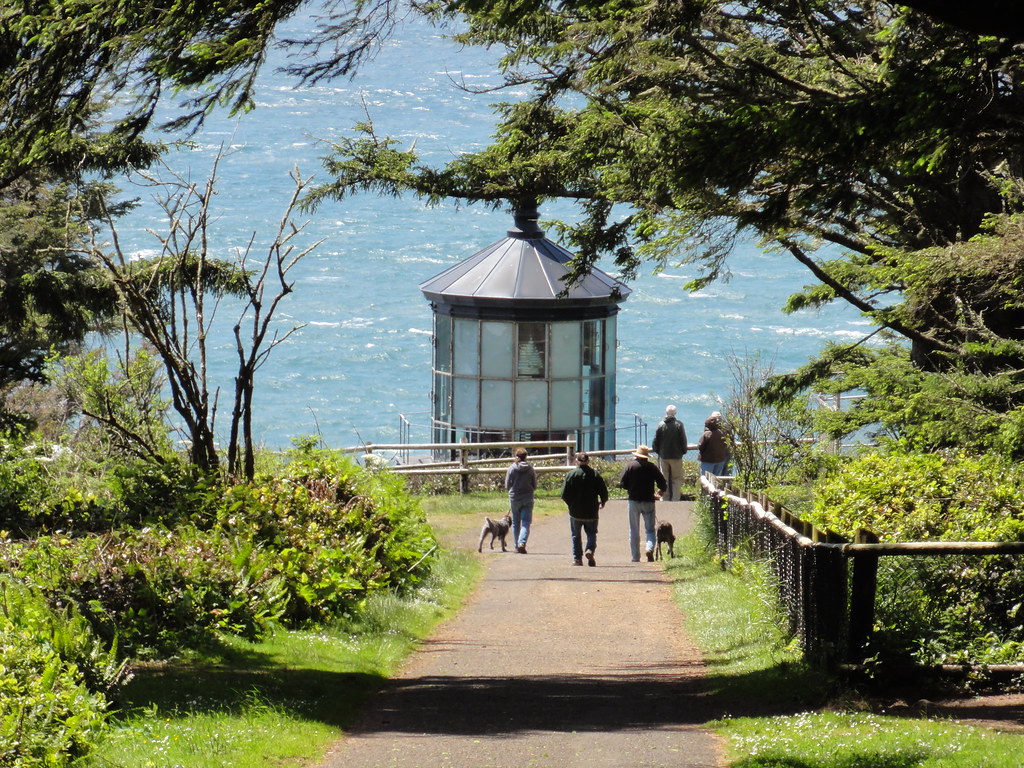 |
| Eye-to-Eye With a Lighthouse |
I cannot tell you how awesome it is to get that sort of view of a lighthouse. It just doesn't happen very often. But that's not all! Water does all sorts of interesting things round here. Did I mention the upside-down waterfall?
As you're walking toward the lighthouse, you may occasionally feel a sensation that makes you think sprinklers are on somewhere. There's a mist, you see, being blown upon the breeze. And it's not until you get a view of the cliff...
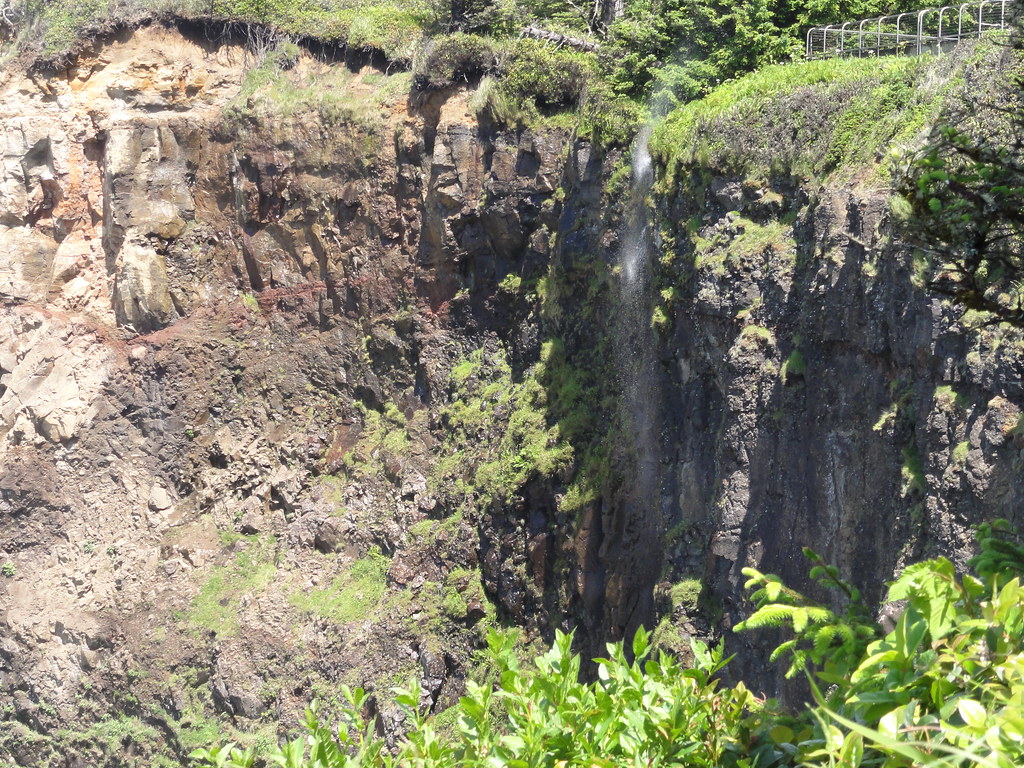 |
| View of the Cliff |
...that you realize what's actually happening:
 |
| Falling Up |
That's right. The wind's strong enough here to take that diminutive little waterfall and make it fall
up. Flings it right over the shoulder of the cliff.
After you've amused yourself watching the waterfall fall down, then up, down-up-up-down at the whimsy of the wind, turn your attention to the cliff proper. Here is a cove where you see 200 feet worth of basalt. Four different Grande Ronde layers, in point of fact, though I had a hard time picking one from the other (haven't yet developed a geologist's eye). Look close enough, and you'll see some poorly-developed columnar jointing and even some billow basalts. It wears a cap of the Astoria Formation, not quite as jauntily as Cape Kiwanda sported its tree cover, but rather like dude wearing a serious sombrero. Or maybe a bowler.
 |
| Ye Olde Cove |
Events here were no less chaotic than elsewhere: basalts plunging into sedimentary layers and ocean after a hot four hundred miles, and this cliff displays the results rather nicely. It's a jumbled mess.
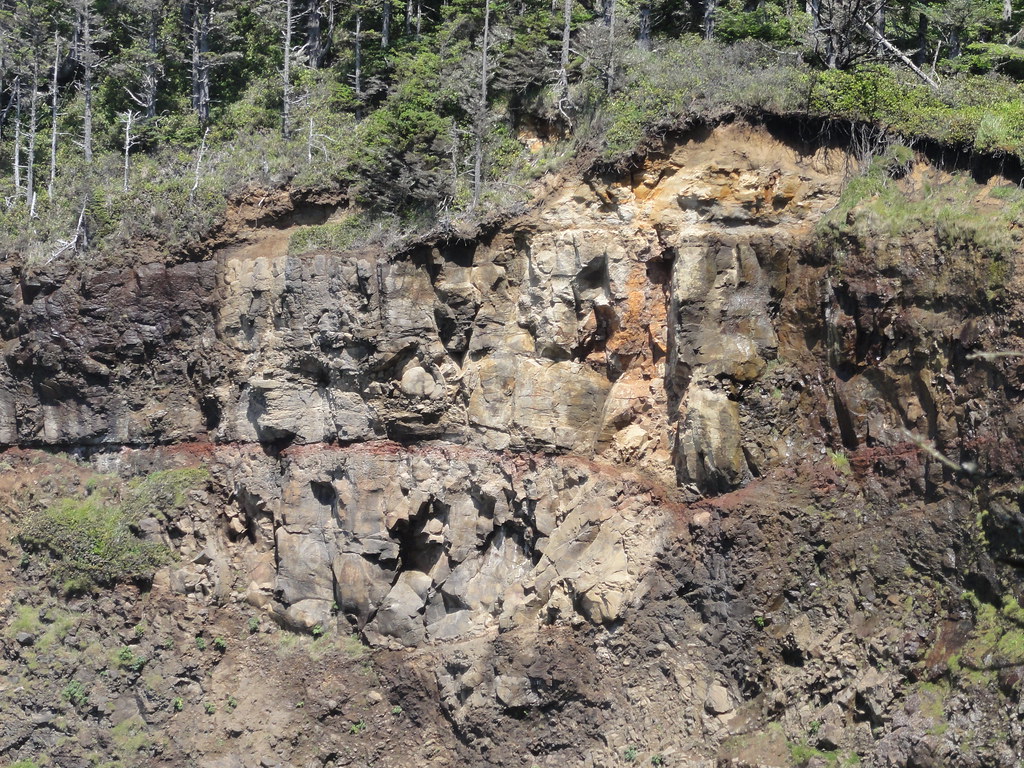 |
| Chaos |
Looks to me like we've got blocks and breccia and contact metamorphism, oh my! Here's a closer view:
 |
| I Gotcher Contact Metamorphism Right Here |
That's a face probably only a geologist could love.
The events that created that cliff were mind-bogglingly violent. When I look at it, I'm seeing a red-hot wall of lava rolling into the sea, great gouts and clouds of steam hissing and roaring as the basalt plunges through mud and sand and slakes itself in the sea. There was probably a gawdawful racket, explosions and boiling water and all manner of excitement. If I had a time machine, this is most assuredly not a spot I would've been visiting fifteen or so million years ago. I'm a wuss. I can't even convince myself it's a good idea to hop on a boat and take a lava tour in Hawaii, and that's the kind of piddly little eruption the Columbia River Basalts would've laughed derisively at. They would fart in Kilauea's general direction. They would taunt it a second time.
Water had the last laugh, though, and it's laughing loudest. This is an excellent place, one of the best in fact, to see the power of water. Look down.
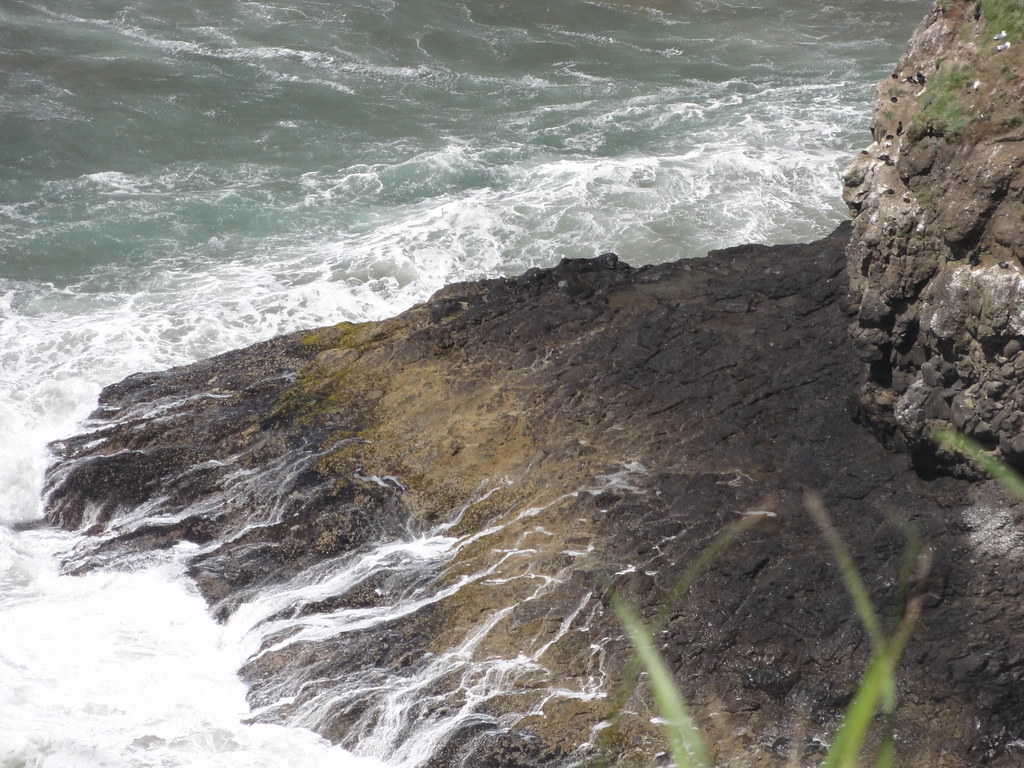 |
| Most Excellent Wave-Cut Bench |
That, my darlings, is an excellent example of a wave-cut bench. Used to be solid cliff, that did, before the water got hold of it. And you can stand there and watch the waves worry away at it, flinging themselves at it over and over, streaming off, and coming back for more. Here, you see?
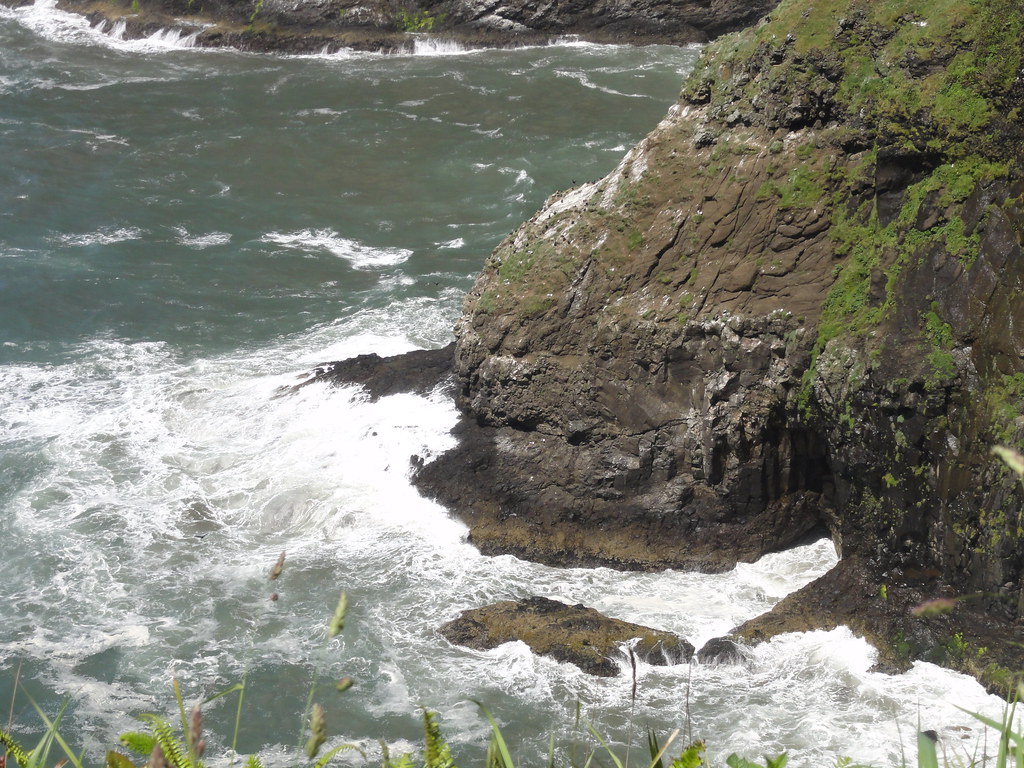 |
| Attack! |
It's even busily excavating a cave whilst carving its bench. Basalt may be hard, but water's relentless. It carves and cuts until cliffs fall down and go boom, then it turns the remnants to sand and uses them to attack the next bit, and so on. Remember what I said about it being a right bastard? 'Tis.
But it's so beautiful.
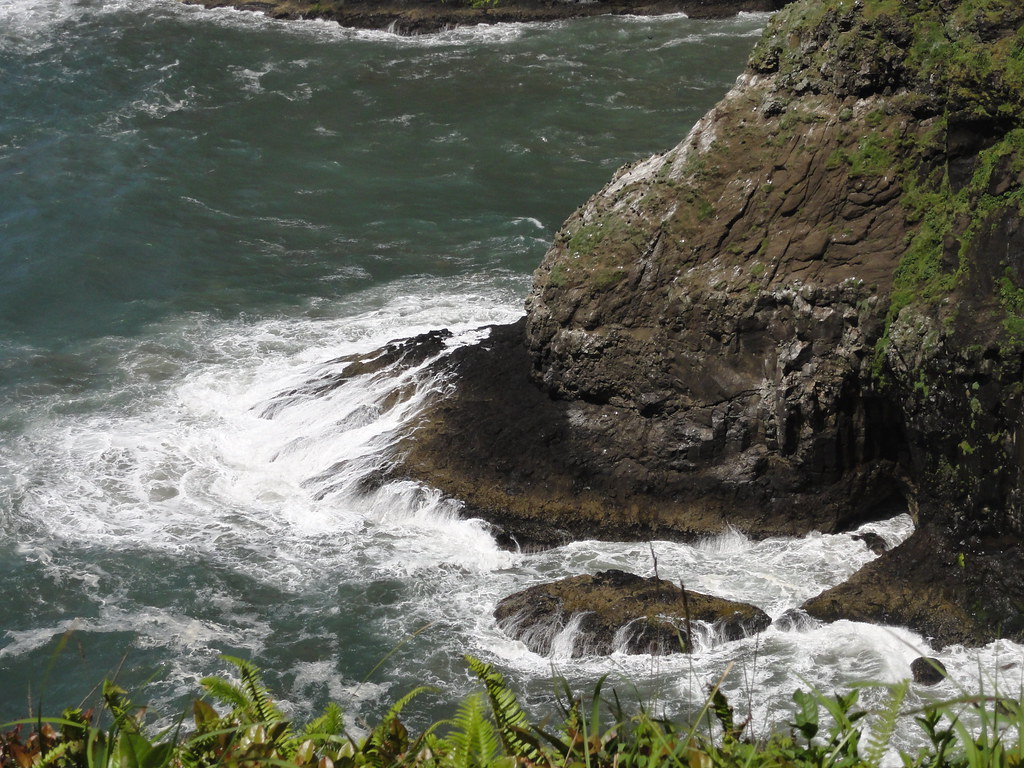 |
| Streaming Back |
Here it's attacking another wave-cut bench on the other side of the cape. Now you see it:
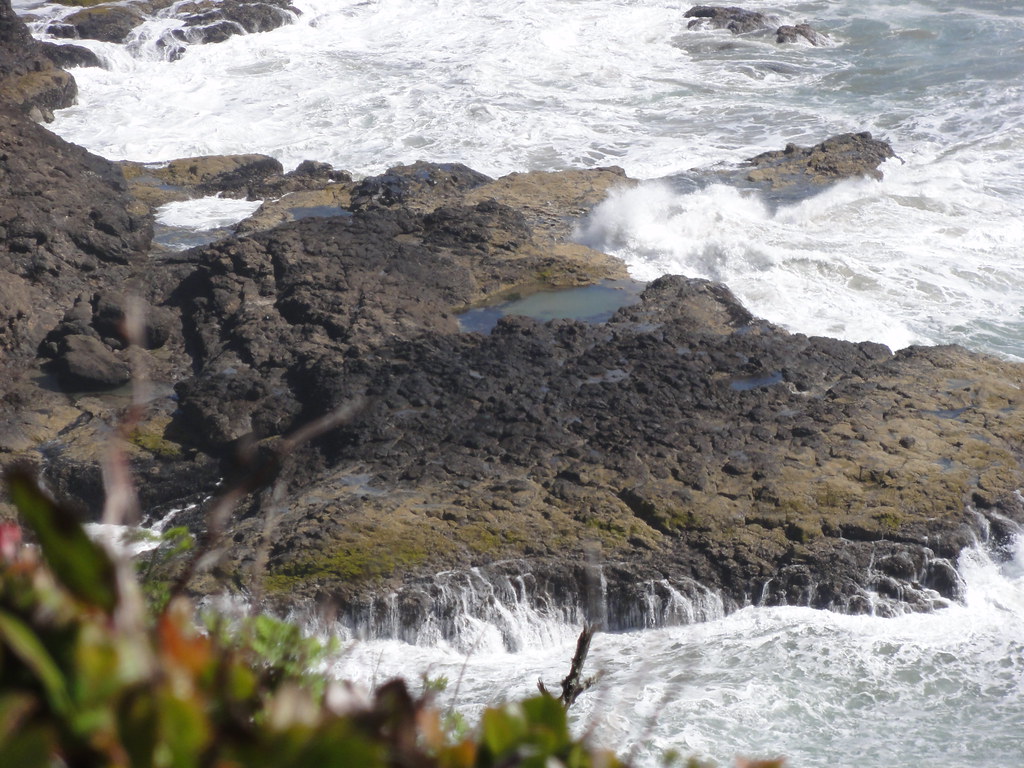 |
| Magnificent Wave-Cut Bench |
Now you don't:
 |
| White Waters |
And do keep in mind, this is what the water was up to on a reasonably
calm day.
At the tip of the cape, you'll see Pillar and Pyramid rocks. They're bits of the old head that the ocean hasn't finished deconstructing yet.
 |
| Pillar and Pyramid |
Love the face in Pyramid Rock. Looks like a gnome being gnawed and a little put out by it all. These are wildlife sanctuaries, and you can enjoy the wildlife if you like, but I was fascinated watching the water wrap around the base of Pillar Rock.
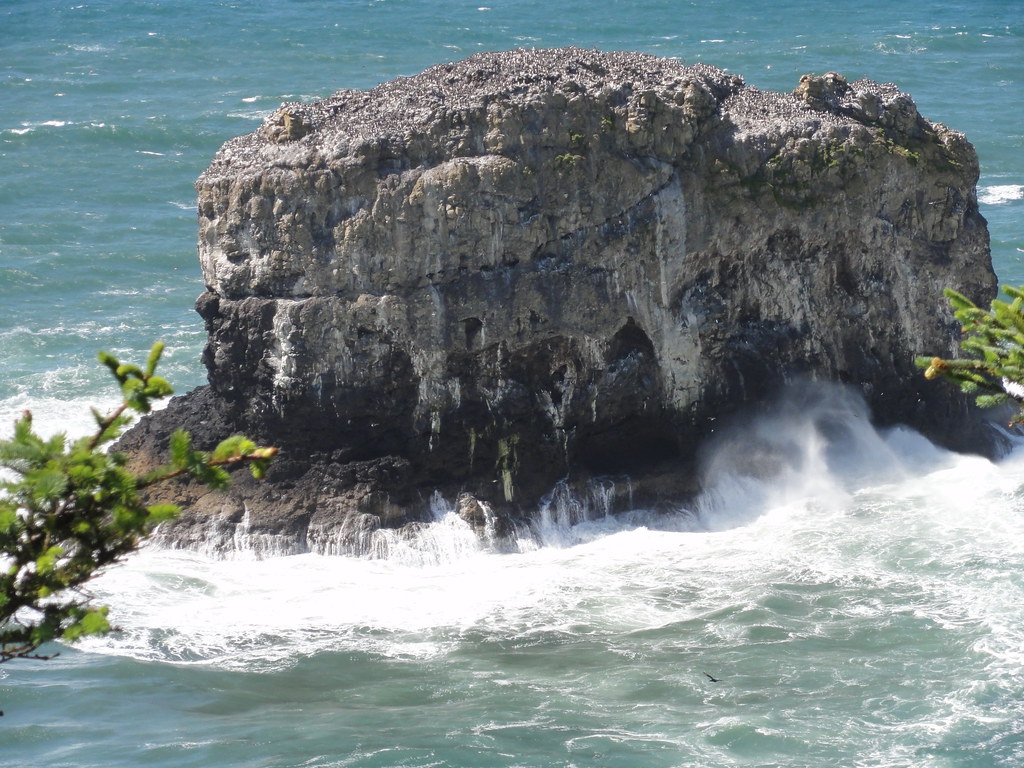 |
| Waters Circling Like Wolves |
I stood there for ages, watching the waters circle the base of the pillar, splashing up against it. One day, I'll understand more about how waves behave when they encounter an obstacle like this, and it'll be even more fascinating than it was at that moment as straight lines curved and bent and traveled around and around, as if searching for a weakness. One of the most beautiful things I've ever seen, that.
From Cape Meares, you also get a better idea as to why the Three Arches Rocks are called that.
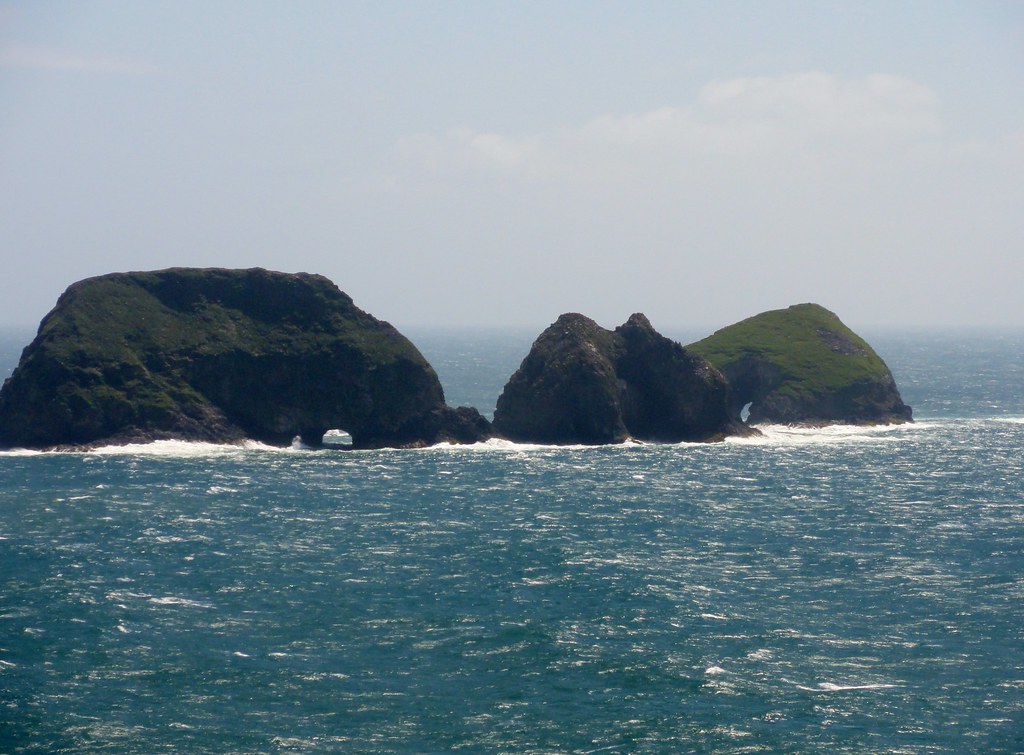 |
| Three Arches Rocks |
Looked quite different from Oceanside, didn't they?
Suzanne told us they would, and she was right.
Of course, you should take some time off from watching hydrology attack geology and go visit yourself the shortest lighthouse in Oregon.
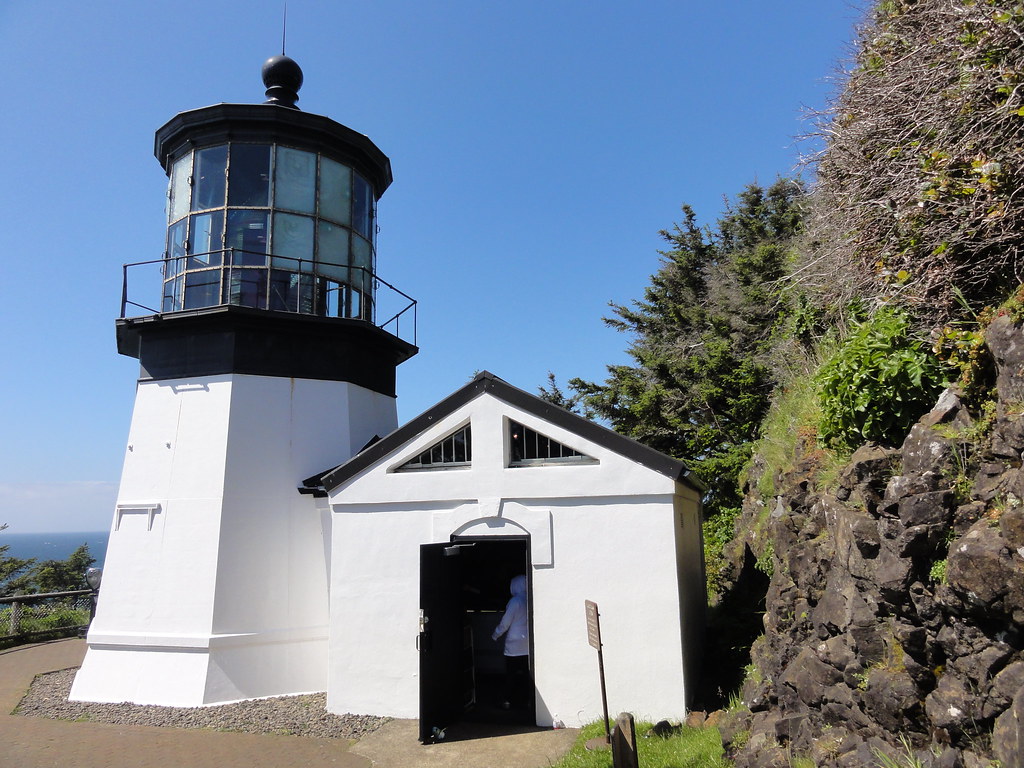 |
| Cape Meares Lighthouse |
There's a tiny little gift shop in there, and it's quite wonderful. I may dedicate a post all to its own self someday. I love how it nuzzles up against the basalt cliff on that notch, there. Probably is not so pretty and peaceful when storms are bouncing boulders around.
So, a long long time ago in an Oregon Geology post far, far away, we talked a bit about landslides. Here, you can get a feel for how slidy the sedimentary slopes are. Peruse this view from the south bit of the cape, and note the bald patches where even the Pacific Northwest's insistent flora hasn't managed to hold on:
 |
| Bald Bits |
Yes, I'd love a house with that view. But I'd be a bit nervous about waking up with the fishes, or with a big blanket of mud, depending on what slid where.
And that, my darlings, is it. We're about to leave the coast and head inland, where we shall see - prepare for a shocker -
more basalt. But
what basalt! A great gorge carved through it, and a river, and waterfalls, and we shall speak of floods the likes of which you'd best hope you'll never see.
Before we head inland, we shall impose upon
the intrepid companion to take his best shot:
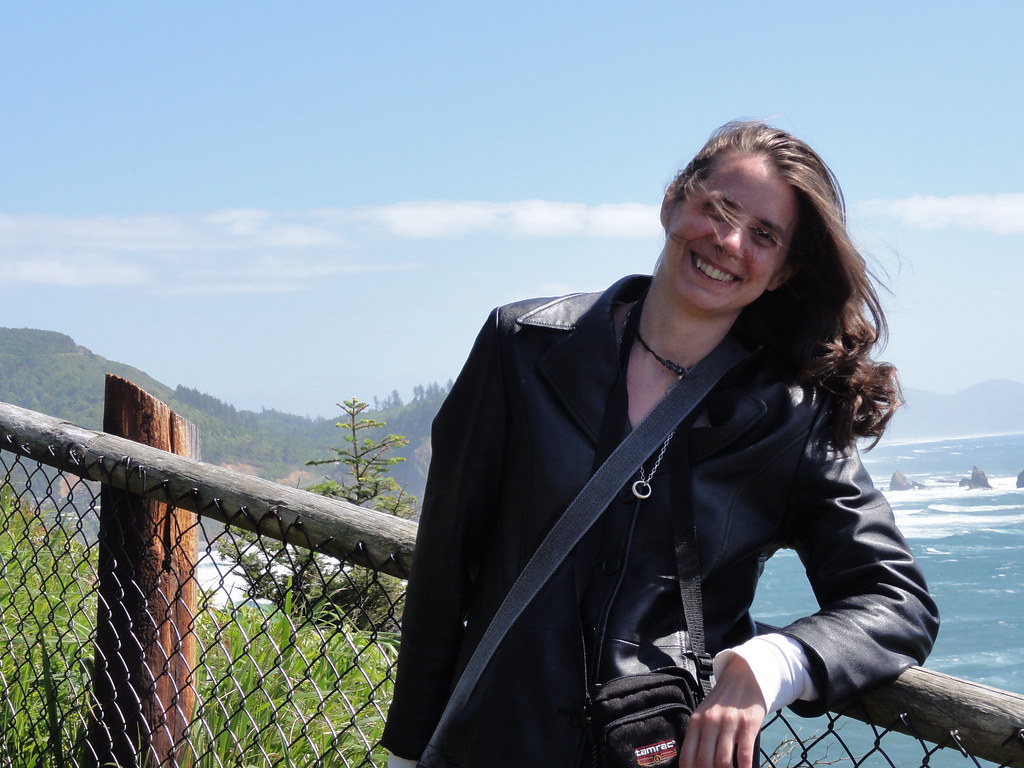 |
| Moi With Coast |
Just imagine, my darlings: all that lovely scenery around me used to be so much molten rock. Amazing, isn't it just?

























3 comments:
ska-wee... love love love your oregon geology posts. i'm laughing while learning
It's always too bad when the rocks are up on the cliff, and you can't get up to them to bang away with your rock hammer - because that's what I want to do!
MMM. Reading this post is not good. I want to go on vacation now.
In regards to the geology, no matter how many times I read and see Columbia River Basalt is on the coast of Oregon I never fail to be impressed and left with a sense of oh wow. And the longer I do geology work the more impressed I am about this not so little tidbit of geologic information about the Oregon coast
Post a Comment